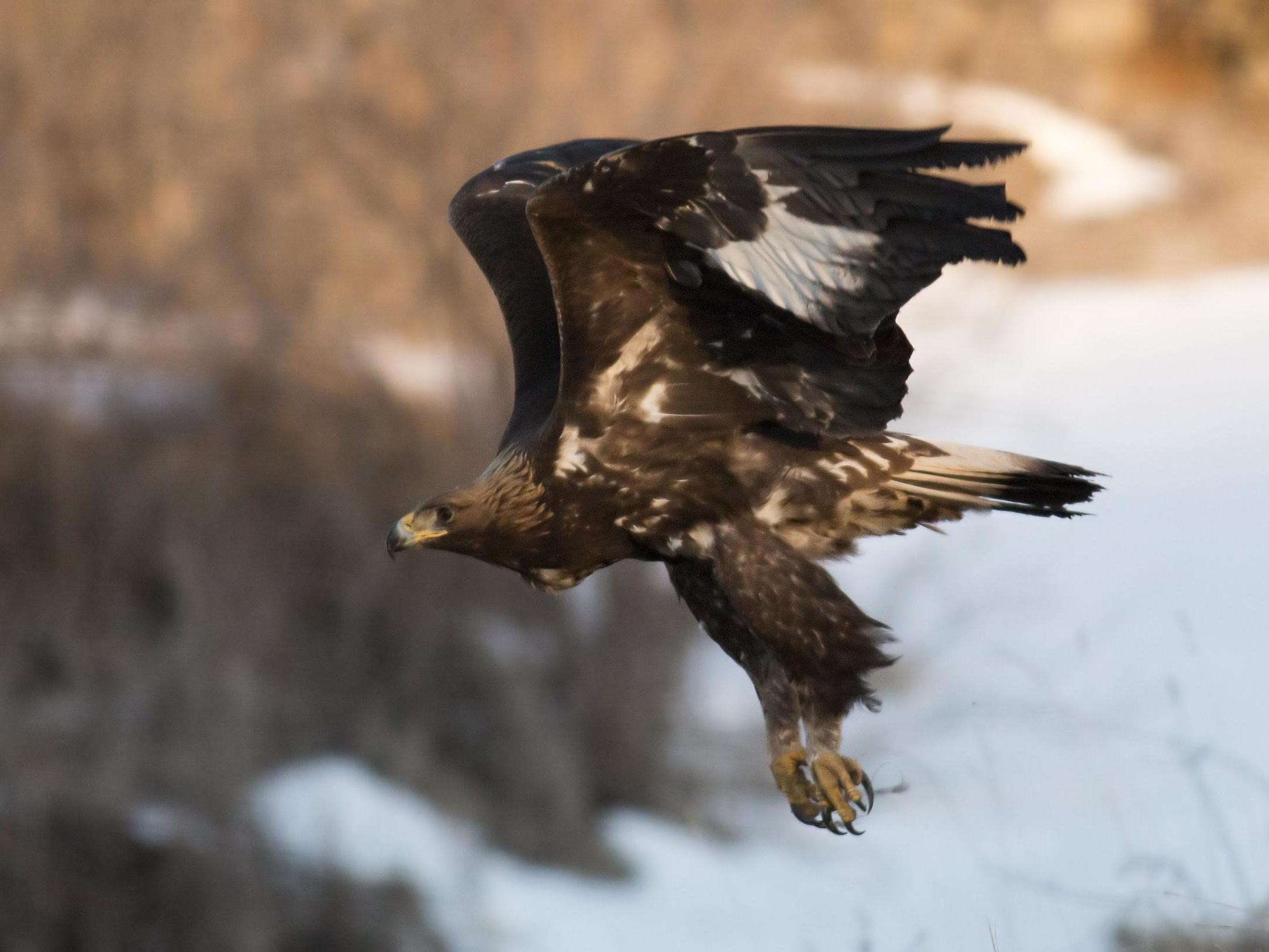Rewilding success as golden eagles rear chick in handmade nest in Scottish Highlands
‘We’ve been keeping our fingers crossed for the past five years, and it’s wonderful that our efforts have paid off like this,’ says Dundreggan estate manager

A pair of golden eagles have successfully reared a chick at a rewilding estate in the Scottish Highlands for the first time in 40 years – with a little help from conservationists.
The birds took up residence in an enormous artificial nest, built by hand from large branches high up on a “rocky outcrop” at Dundreggan rewilding estate, west of Loch Ness.
It is the first time the species, which is the second largest native bird of prey in the UK after the white-tailed eagle, has successfully reared offspring at the 10,000-acre site since 1980, and conservationists hope it will boost the recovery of the spectacular birds, which were hunted to extinction in England and Wales in the mid-19th century, and have never returned.
The eagle chick flew from the nest for the first time last week, marking a huge success for the project, particularly as the nest (or eyrie), had been built back in 2015 by renowned conservationist Roy Dennis.
The Dundreggan estate was once an ancient hunting ground for kings and Scottish lairds, and as part of the Caledonian Forest was home to a vast array of wildlife before the trees were almost entirely razed to create grazing land for sheep and deer.
But the estate was bought in 2008 by charity Trees for Life, which is replanting native species of trees and rewilding the depleted landscape.
Though golden eagles have been frequent visitors to Dundreggan, there had been no sign of nesting activity or of any individuals setting up a territory there.
There was also no certainty the artificial eyrie would work. Golden eagles usually build their own nests in remote and inaccessible places, and are highly sensitive to disturbance.
“This is a rewilding success story beyond our wildest dreams,” said Doug Gilbert, Trees for Life’s Dundreggan manager.
“I’ve been checking the eyrie regularly since we built it in 2015, hoping to see evidence that the eagles had returned – and now they have.
“As golden eagles may use their nesting sites for generations, we’re hoping they are back for the long-term. Four decades without golden eagles breeding or establishing themselves in this part of our wild and beautiful Highland glen have been four decades too long.”
He added: “When we built the artificial nest, we knew it was in a good location for eagles because we found the remains of an old nest at the site. We’ve been keeping our fingers crossed for the past five years, and it’s wonderful that our efforts have paid off like this.”
Golden eagles’ recovery in Scotland has been a painstaking process, with regular setbacks due to continuing illegal persecution of raptors.
There are annual reports of golden eagles being shot, poisoned or having their nests robbed. Just last week, a 1-year-old tagged golden eagle known as Tom was reported missing. Its last known location was at a grouse moor in Strathbran – an area notorious for the illegal persecution of birds of prey.
Tom was the eighth golden eagle known to vanish from this area, according to RSPB staff.
Despite the suspicious disappearances, the fourth national golden eagle survey, published in 2016, showed Scotland’s population of the birds had increased to 508 pairs, a rise of 15 per cent since the previous survey in 2003.
Highland Raptor Study Group member and golden eagle expert Stuart Benn said the fledging of the chick at Dundreggan was “terrific news”.
“Eagles are undergoing a marked expansion in the Highlands just now, recolonising ground they haven’t been on for many years and even colonising some completely new areas.”
Join our commenting forum
Join thought-provoking conversations, follow other Independent readers and see their replies
Comments
Bookmark popover
Removed from bookmarks